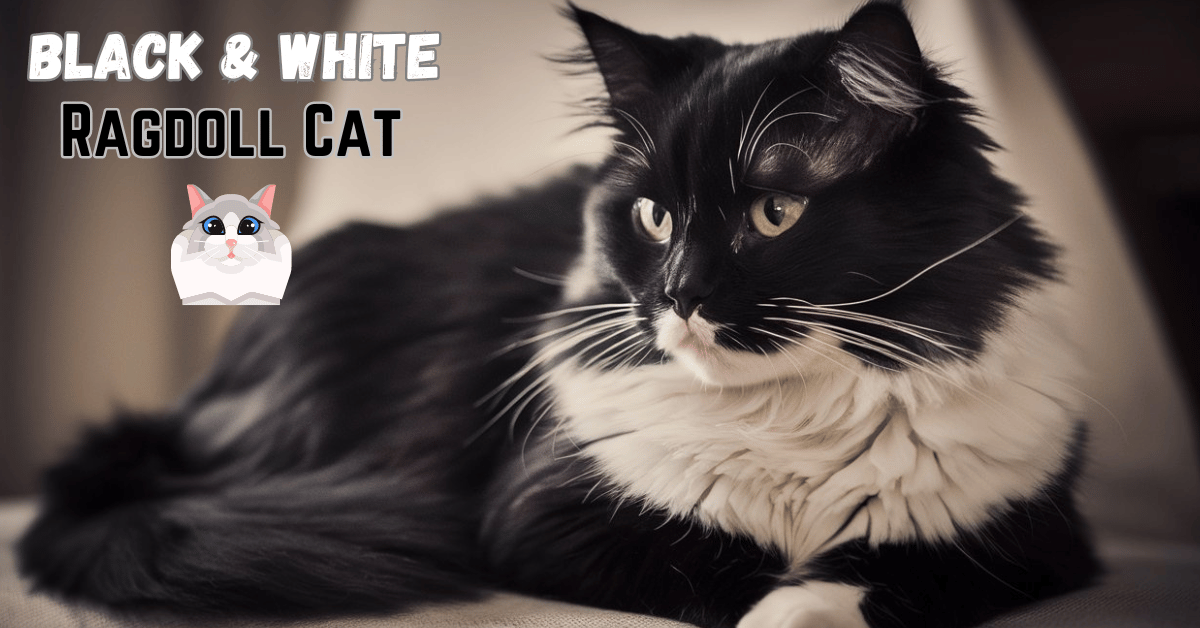This post contains affiliate links and I will be compensated if you make a purchase after clicking on my links.
The Elegant Tuxedo Black And White Ragdoll Cats
The Tuxedo Black & White Ragdoll cat epitomizes feline elegance with its distinctive bi-color coat that is reminiscent of a classic tuxedo. This bi-color pattern is not unique to Ragdolls and can be found in various purebred and mixed-breed cats. In Tuxedo cats, the coat is typically dominated by black with strategic white markings enhancing their chest, neck, face, and paws, although in some cats, white may be the more prevalent color.
Despite the variety in coat colors and patterns among Ragdoll cats, those sporting a tuxedo pattern might have an ancestry with a mix of other breeds. However, this does not affect their well-loved personality, which remains a standout trait of the breed.
In some instances, the presence of signature blue eyes alongside a tuxedo coat could suggest a lineage closer to the traditional Ragdoll traits, although mixed or diluted genes are more common.
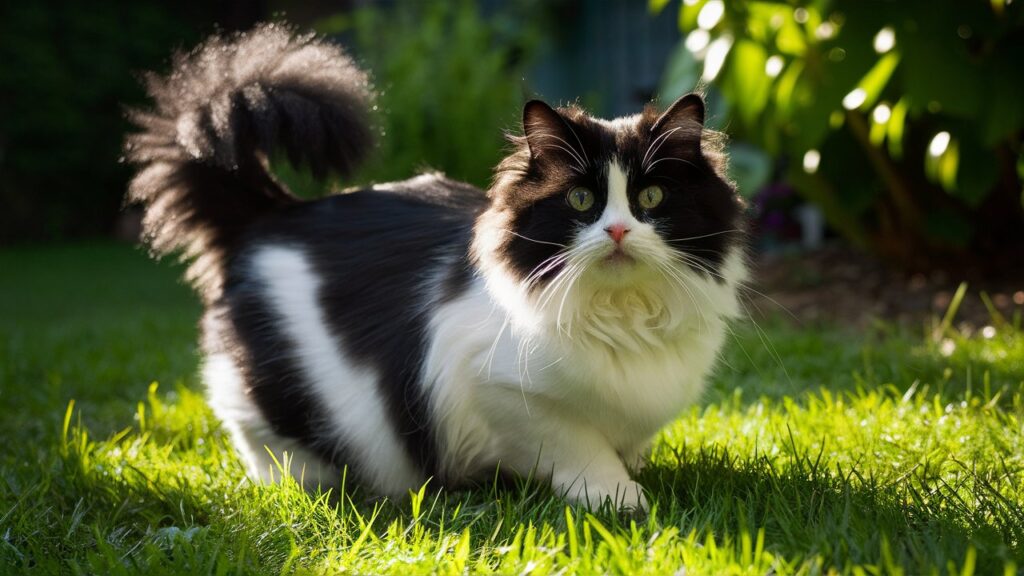
Fun Fact: The tuxedo bi-color pattern extends beyond Ragdolls to breeds like Domestic Shorthairs, Turkish Vans, American Shorthairs, and majestic Maine Coons. These stylish cats don more than just black and white; they also flaunt coats in shades of gray, silver, orange, and tortoiseshell, highlighting their diverse and vibrant fashion sense.
Origins and History of the Black and White Ragdoll Cats
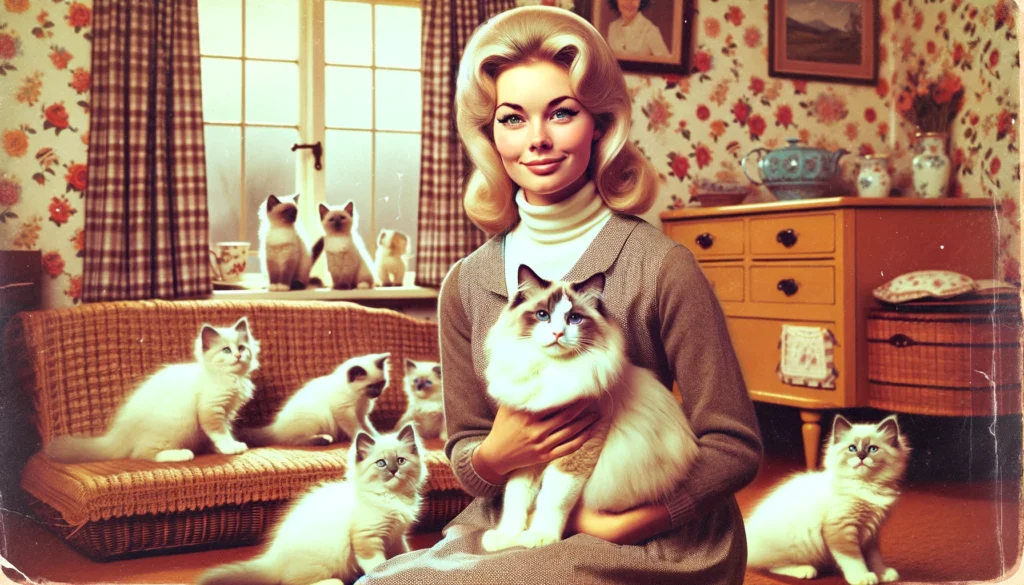
The story of the Black & White Ragdoll Cat begins in the sunny settings of California during the 1960s, thanks to the pioneering efforts of breeder Ann Baker.
With a vision to create a cat with a distinct temperament and appearance, Baker initiated a breeding program using a white Persian female and a Birman-type male. This pairing produced kittens with not only serene demeanors but also strikingly unique looks.
Among the first of these kittens were Daddy Warbucks and an all-black male named Blackie. These two cats were crucial in laying the foundation for the Ragdoll breed.
Blackie, in particular, is notable because his inclusion from the breed’s inception cements the Black & White Ragdoll’s status within the core lineage of the Ragdoll family, challenging the notion that Ragdolls are solely color-pointed cats.

Fun Fact: The term “tuxedo” used to describe these cats, also affectionately known as “tuxies,” “Felix cats,” or “Jellicle cats,” reflects more than just their coat pattern—it symbolizes their distinct identity within the feline world.
Physical Characteristics of Tuxedo Black and White Ragdoll Cats
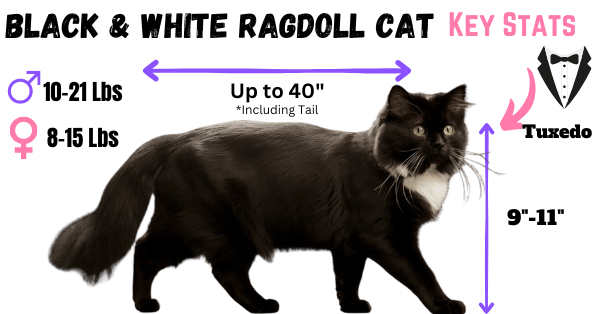
Tuxedo Black & White Ragdoll Cats stands at 9-11 inches tall and weighing between 8-21 pounds, these cats feature a long, rectangular body, moderately long legs, and a bushy, well-plumed tail that accentuates their regal posture. Their fur is distinctly shorter around the face and shoulders, transitioning into a luxurious ruff around the neck.
The most striking facial feature is the ‘V’ shaped marking, often paired with vivid blue or deep gold eyes, adding intrigue to their already captivating gaze. The coat, characterized by sharp white markings, typically adorns the face, chest, chin, belly, and legs, with occasional minimal white patches on the back.
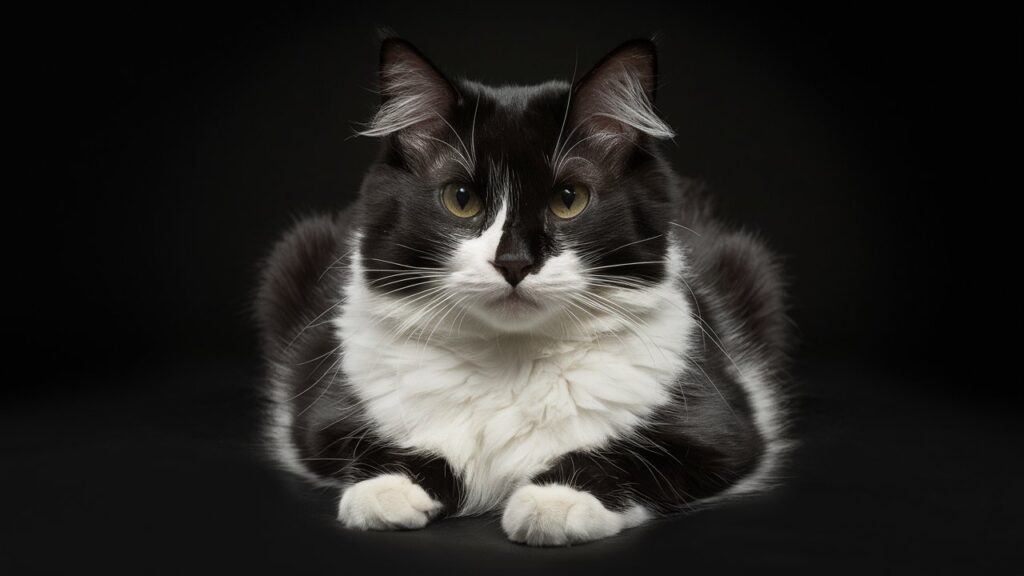
These physical attributes, coupled with a lifespan of 12-15 years, large rounded paws, and a robust triangular head with widely spaced ears, underline the Tuxedo Black & White Ragdoll’s distinguished presence.
Breed Recognition Challenges for Black And White Ragdoll Cats
Despite their captivating appearance and amiable personalities, Tuxedo Black & White Ragdolls encounter significant hurdles in breed recognition. Key cat fancier associations, including The Cat Fanciers’ Association (CFA) and The International Cat Association (TICA), do not officially acknowledge the Tuxedo pattern within the standard Ragdoll colorations.
This lack of official recognition impacts breeders and owners who are keen on participating in cat shows, as Tuxedo Ragdolls are often considered to have mixed heritage.
This perception of impurity stems from the unique genetic interaction responsible for their distinctive coat pattern. The Tuxedo coat arises from two specific genes: one that imparts a black coat and another that causes white spotting.
This combination occurs during the cat’s embryonic development, resulting in a pattern that makes the Black and White Ragdoll somewhat rare. This deviates from the more straightforward inheritance patterns observed in traditionally recognized Ragdoll colors and patterns.
Fact: Current breed standards from organizations like the CFA and TICA specify that Ragdolls should exhibit patterns such as Bi-Color, Van, Colorpoint, or Mitted. Accepted color points include seal, blue, chocolate, lilac, red, or cream, with Tortie and Lynx patterns also embraced.
Personality Traits of Tuxedo Black & White Ragdoll Cats
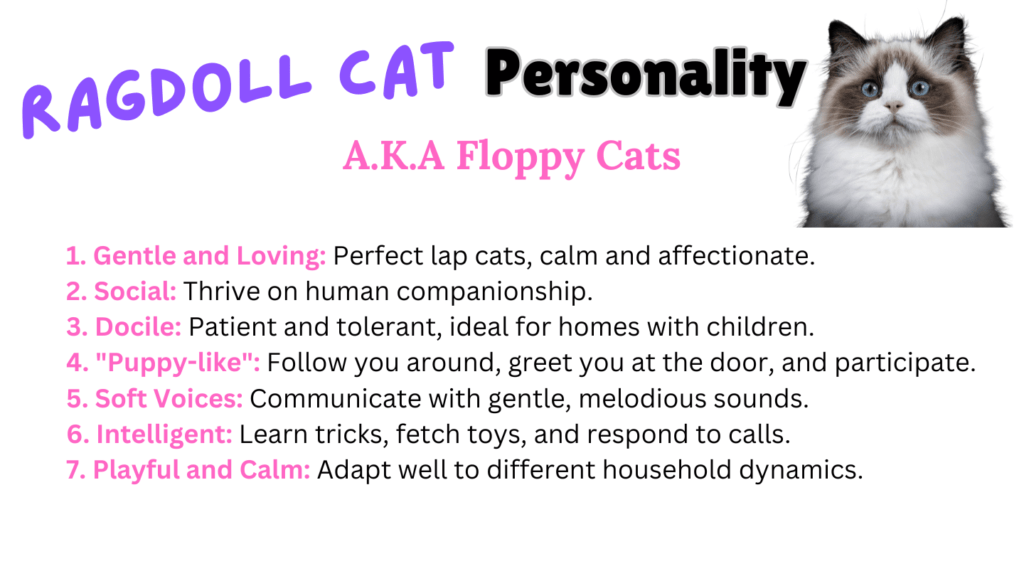
Tuxedo Black & White Ragdolls charm not only with their striking looks but also with their engaging and affectionate personalities. These cats are known for their calm and docile nature, often displaying endearing, dog-like behaviors such as following their owners around the home, demonstrating loyalty without being overly clingy.
Unlike many cats that seek the highest vantage points, Tuxedo Ragdolls typically prefer staying closer to the ground. This behavior, along with their tendency to become floppy or limp when picked up, has earned them the nickname ‘puppy cats’ of the cat world.
While they are generally not very vocal, they do express themselves through soft purring or gentle muttering, subtly communicating their needs and emotions.
Fun Fact: Just like fans of the snazzy tuxie, enthusiasts of Tuxedo Black & White Ragdolls often boast that their cats are sharper than your average kitty. It’s a proud claim that adds to the allure of these charming felines among cat connoisseurs!
Health Considerations for Tuxedo Black & White Ragdolls
While owning a Tuxedo Black & White Ragdoll is a delightful experience, it’s important to be proactive about their health. Here are some health conditions to be mindful of, which require regular veterinary check-ups to manage effectively:
- Hypertrophic Cardiomyopathy (HCM): A common heart condition in cats that can affect their overall health and activity levels.
- Polycystic Kidney Disease (PKD): A genetic disorder that leads to the formation of cysts in the kidneys and can impact renal function.
- Inflammatory Bowel Disease: Often seen in Ragdolls, this condition involves chronic intestinal inflammation, which can affect their digestion and quality of life.
Before getting a black and white Ragdoll, verify that the breeder has performed the necessary genetic testing, applicable to any breed.
Tuxedo Black & White Ragdolls: A Legacy of Charm and Popularity
Tuxedo Black & White Ragdoll Cats hold a prominent place not only in homes but also in cultural history. These cats have been companions to influential figures such as William Shakespeare, Sir Isaac Newton, and Beethoven, all of whom reportedly cherished these distinctively patterned felines. The charm of these cats even reached the White House, with a Tuxedo cat notably being a pet during Bill Clinton’s presidency, underscoring their wide appeal and charismatic presence.
While show standards may feel limiting, especially for fans of the distinctive Tuxedo Black & White Ragdolls, they hardly matter to those who adore these cats simply for their companionship.
In 2021, the Ragdoll breed, Tuxedo Black & White included, clinched the title of the world’s most popular cat breed from the Cat Fanciers’ Association (CFA), a testament to their lasting appeal and the special place they occupy in the hearts of cat enthusiasts globally.
Meet Sean, a fintech whiz with a penchant for pet purrs and blockchain buzz. After a decade of fintech feats, Sean’s tech talents leaped from ledger lines to litter lines, driven by a passion for pets and a vision for a more connected pet care community. With three critter companions as co-pilots, Sean launched this blog to share a treasury of pet-friendly tech tips and tales.

